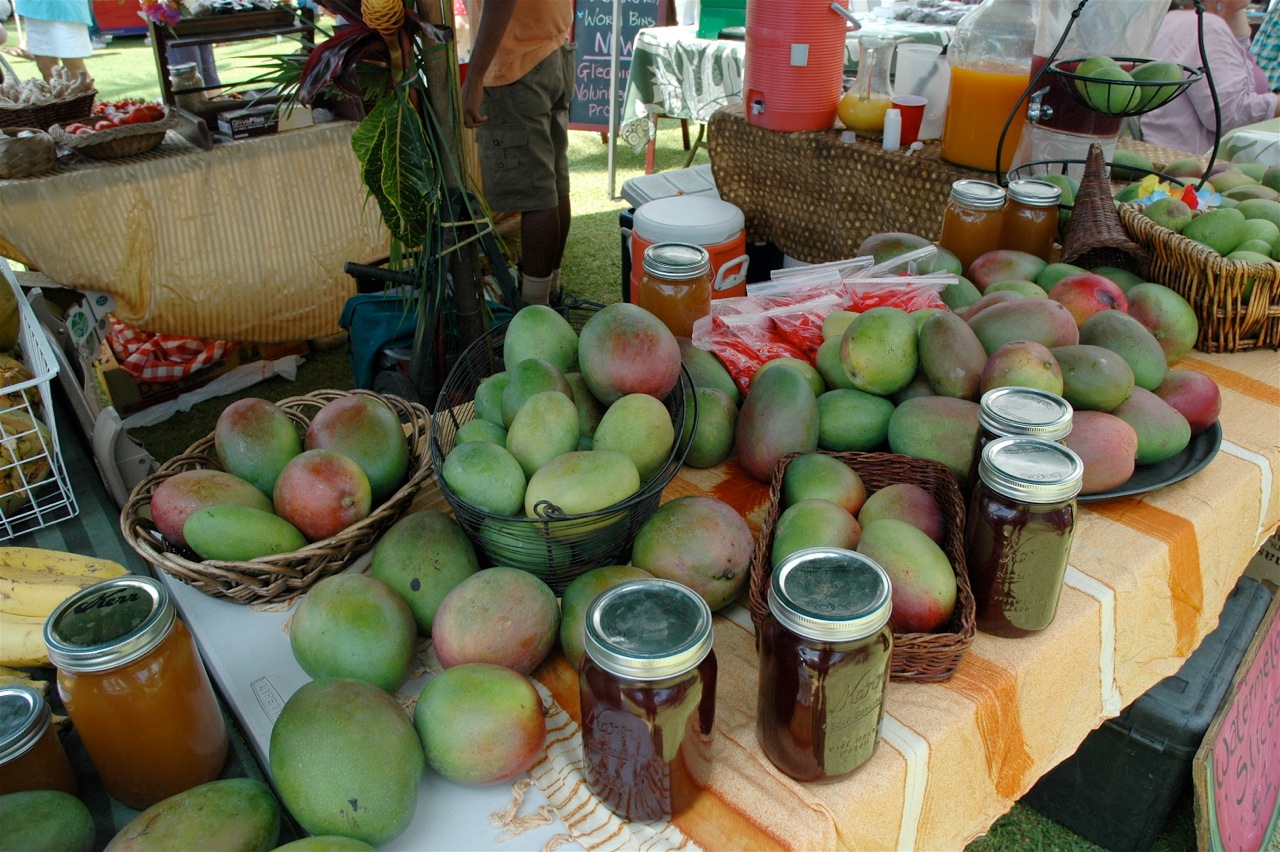Mango is a Local Favorite—and for Good Reason

A sampling of the mango mania from a previous Annual Mango Festival. Photo courtesy of Fern Gavelek.
The mango is definitely a local favorite here in Hawai‘i. We even hold an Annual Mango Festival in August in Kona to celebrate the beloved fruit.
The sweet, aromatic smell and taste of a perfectly ripe, juicy mango or the savory tang of pickled mango is enough to wake up almost anyone’s taste buds.
Mango is so tasty, it is sometimes viewed as a guilty indulgence, but it actually has health benefits as well.
With over 60 varieties grown in the state, it can be hard to decide on a favorite.
Three prominent varieties are island favorites and each has its own unique characteristics.
- Hayden, with its red, yellow and green skin, is a more common and easier accessible mango to find.
- The Hawaiian rapoza starts off green, then turns purple and finally yellow.
- The Hawaiian pirie mango is more yellow and green than red. It is an older variety grown here in the islands.
Peak mango season in Hawai‘i is July, with flowers appearing on the trees between December and April. Fruits can be visible as early as May. Some trees bear fruit into the fall.
During mango season, it is not unusual to find a wide range of savory dishes, sweet creations and thirst-quenching beverages that feature mango.
Many locals still like to eat both the ripe and green mangoes with a dipping sauce concoction known as “bug juice.” Although the actual recipe for bug juice varies, it basically consists of shoyu (soy sauce), vinegar (white or apple cider), sugar and black pepper (note: no actual bugs). While no one really can trace the origins of “bug juice,” like the mango, just the thought of it will make your taste buds water.
The earliest record of mango coming to Hawai‘i was 1824, when several small trees arrived from Manila.
The following year, three trees were brought in from Chile. In 1899, trees grafted from the Indian varieties were imported and seedlings were distributed over the six major islands.
Today, mango tree orchards can be found in throughout all districts of Hawai‘i Island.
Known by many as the king of fruits, the mango is packed full of health benefits. Research has shown that the antioxidant compounds in mango fruit help to protect against several different types of cancer.
The vitamin C, fiber and pectin help to lower LDL (bad cholesterol) levels.
Just one cup of sliced mangoes provides you with 25% of the daily dose of recommended vitamin A, which is beneficial to good eye health.
The leaves of the mango tree are also used to help regulate insulin levels in the blood. Boiling leaves in water, then soaking them through the night and consuming the strained liquid in the morning is a traditional home remedy. It is also worth noting that due to its relatively low glycemic index, consuming mangoes in moderate quantities will not raise your blood sugar level.
But, a word of caution: The skin, leaves, bark and sap of the mango contains urushiol, which can cause the same kind of skin rash as that from a brush with poison ivy. People who have a history of reactions to poison ivy and poison oak should be cautious when handling mangoes.
But, people who are sensitive to contact with urushiol can usually eat mango fruit without problems, because the pulp of the mango fruit does not contain urushiol.
So the next time you crave a mango, know that there should be no guilt involved!














